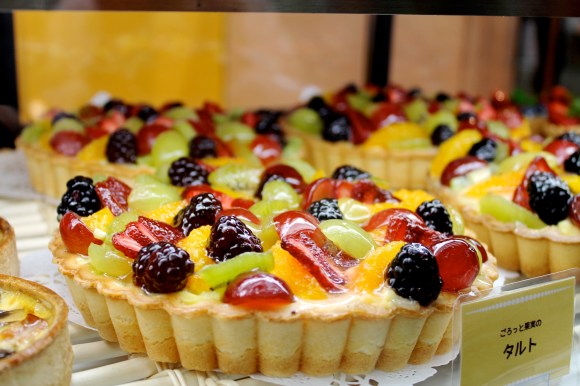
This week, a major food and drink expo was held in Tokyo’s Odaiba area called The World Food and Beverage Great Expo 2013. It’s actually a combination of six different events, including a dessert and wine fair. With hundreds of exhibitors from Japan and abroad showing off their latest and tastiest concoctions, we decided to check it out and see how many free samples we could gobble up. Here’s what we learned.
1. You can eat some surprising things.
For me, the foods fell into three categories: foods I was familiar with as a Westerner, foods I was familiar with from living in Japan, and foods I did not even realize you could eat.
From candied lemon rinds (above) to pureed cherry leaves (below), many things that would normally have been tossed in the trash were made into surprisingly tasty nibbles.
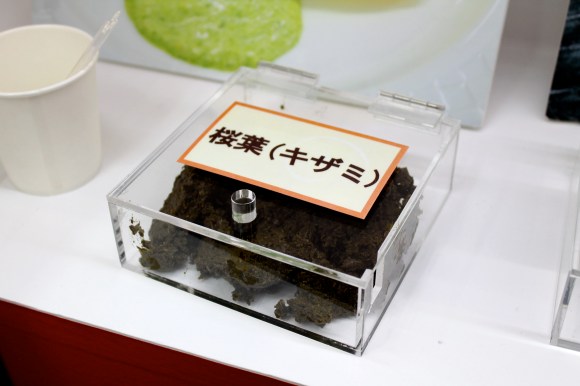
Pureed leaves from cherry trees.
Other surprises where ways of processing foods that wouldn’t have occurred to me before, like fish jerky, noodles made from seaweed, or dry-cured chicken. The noodles in particular could be very popular for dieters, as they have just six calories per 100g serving. They don’t have much of a flavor on their own, but were nice with some salad dressing. And the dry-cured chicken, which is made by taking a raw chicken breast, soaking it in brine and then smoking it, tastes a bit like a thick, soft prosciutto.
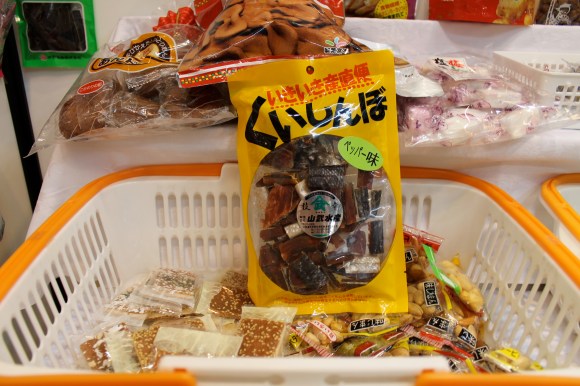
Fish jerky is tasty, but, a word to the wise, you might not want to eat it in a closed space.
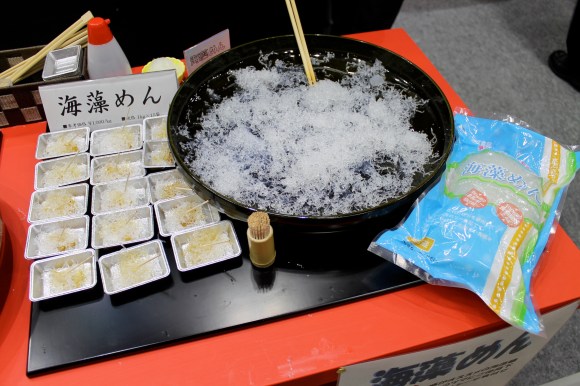
Might not look that appealing, but it’s good for you.
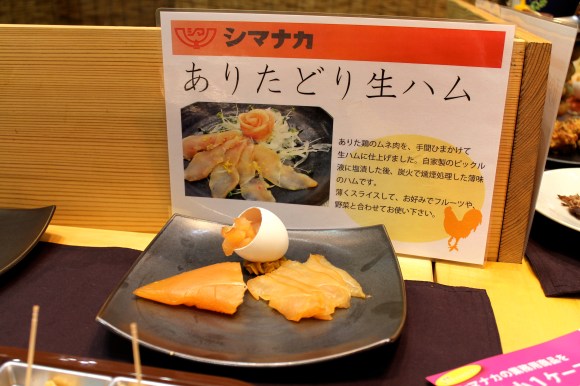
Try some raw chicken? Sure, why not?
2. Japanese really love desserts
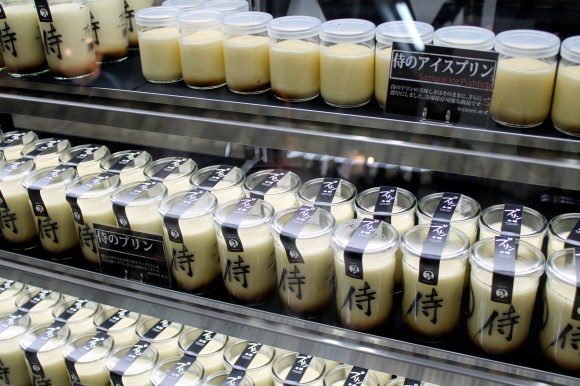
Samurai Pudding, for your sweet-tooth swordsman.
A huge portion of the expo floor was given over to dessert exhibitors and absolutely everything looked delicious. There were a few overseas booths, like Swiss chocolatier Laderach who very kindly let me work my way through their line of artisanal truffles, but most of the exhibitors were domestic.
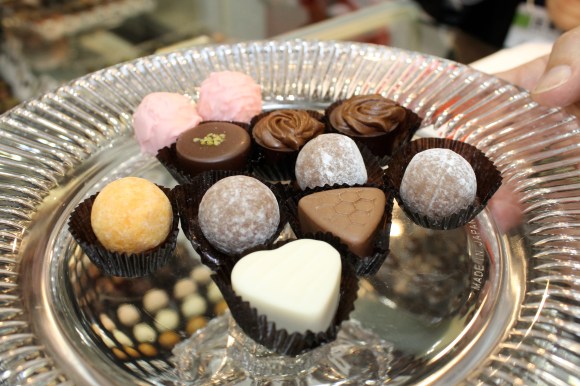
Mmm, don’t mind if I do. Do you want the plate back?
Classics like kakigori (shaved ice), yokan (firm blocks of red bean paste and seaweed gelatin) and anmitsu (seaweed gelatin cubes with syrup and other toppings) all made several appearances.
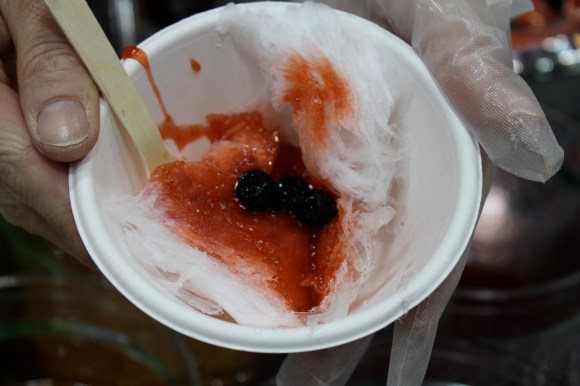
Strawberry kakigori with blueberries
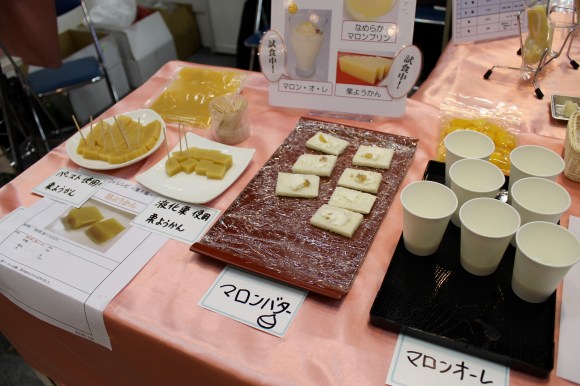
Those little cubes to the left are chestnut yokan.
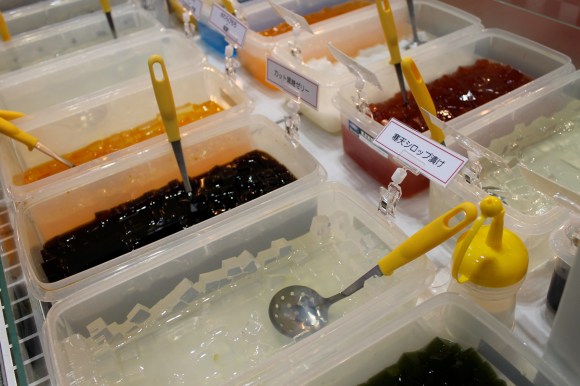
A build your own anmitsu bar! I went with brown sugar syrup, adzuki beans and a matcha-flavored mochi ball.
This is not to say that all the sweets were Japanese, though! Like the Samurai Pudding above, many companies were taking a Western dessert and giving it a bit of an Asian touch. Sakura and matcha flavored cakes featured heavily, as did exquisitely designed tarts.

Oh my god, get in my mouth, you delicious little thing!
3. Fake food is a cruel, deceptive art.
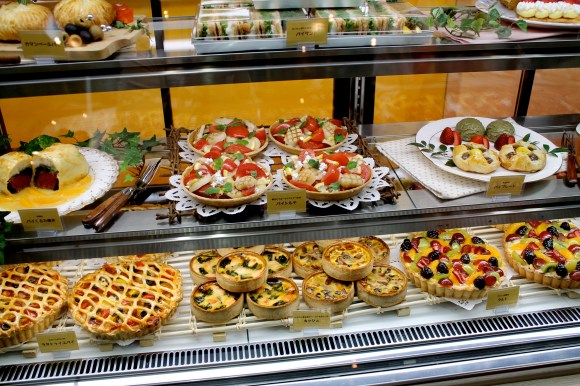
Mmmmmm, plastic.
Think the foods above look tasty? Yeah, me too. Too bad they were all fake!
Visitors to Japan know restaurants often display their offerings in plastic or wax form, so there’s a whole industry built around creating this faux food. I can’t deny its usefulness, particularly when you can’t read a menu, but at FABEX, it was an all too common experience to spot some delectable looking morsel across the aisle and dart over for a taste, only to be disappointed when it turns out to be inedible.
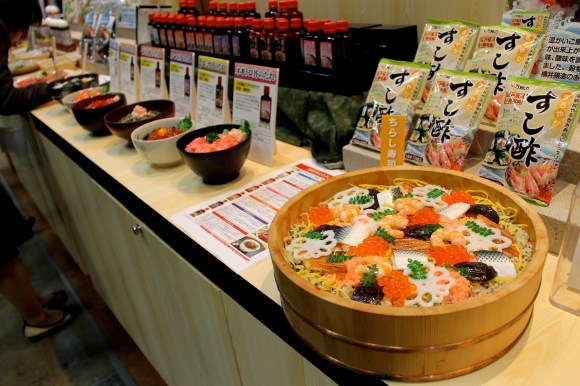
Come on! Why wouldn’t you want to leave raw fish on display all day?
4. Cartoon characters can be used to sell anything.
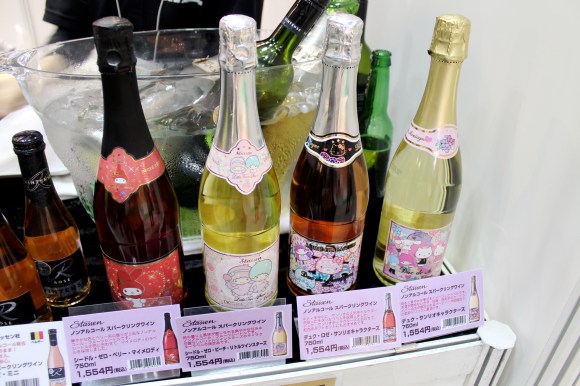
To be fair, adults in Japan love Kitty-chan as much as kids do.
A little Hello Kitty sparkling wine for your toddler? This display certainly caught my eye as I passed. It turns out this is actually part of a range of non-alcoholic wines the company produces, but it’s still something of a shock to see children’s characters on booze-shaped bottles.
5. The Japanese really love a good robot.
Not only food and beverage makers, but also the companies that serve them attend the expo. You could find booths exhibiting cutlery, packaging, glassware and any number of other restaurant must-haves, but the most popular booths by far were selling robots and other nifty machines.
The Sushi Robots from Suzumo were particularly popular. Here’s a video of one prepping rice for nigiri.
Here’s a takoyaki maker, which rotates the balls evenly by vibrating.
And, of course, the ever popular hot rice dispenser.
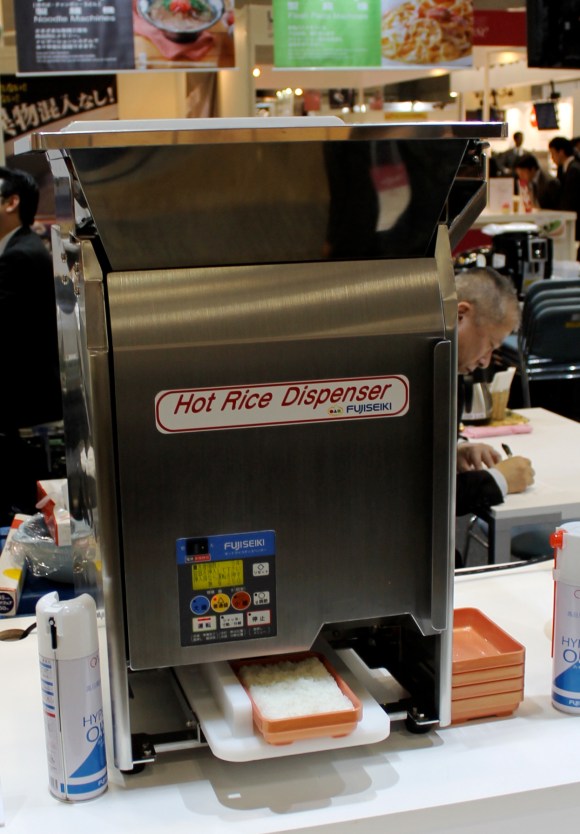
It dispenses hot rice.
But the most important lesson I learned by far is this:
6. FABEX is a great place to stuff your face and get drunk!
Between the endless free samples and the very heavy pours in the wine and liquor section, the hours just flew by and I headed home a very full, tipsy and happy girl. I’ll be back next year, FABEX, in my loosest pants and with my biggest purse.
Some other random pictures for your enjoyment.
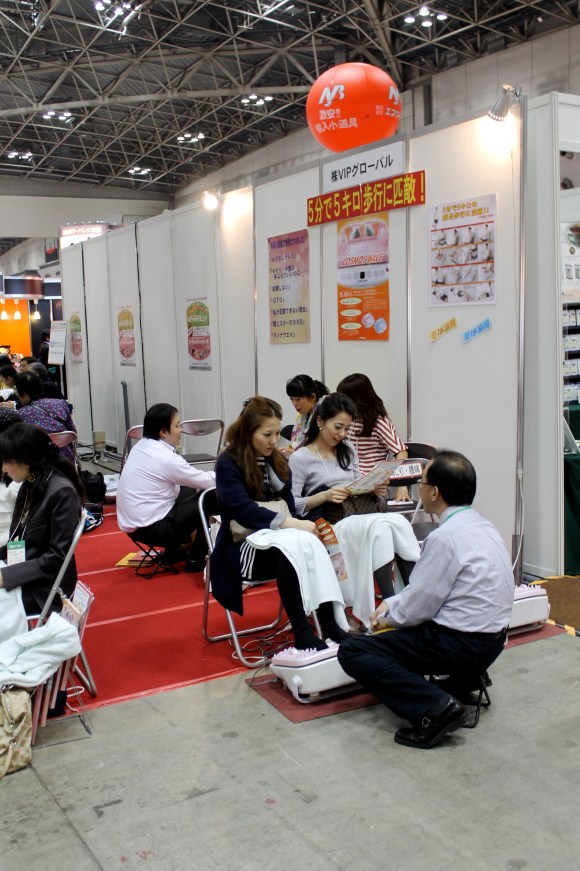
If you get tired from eating and drinking, you can get a foot rub.

The Baumkuchen blimp!
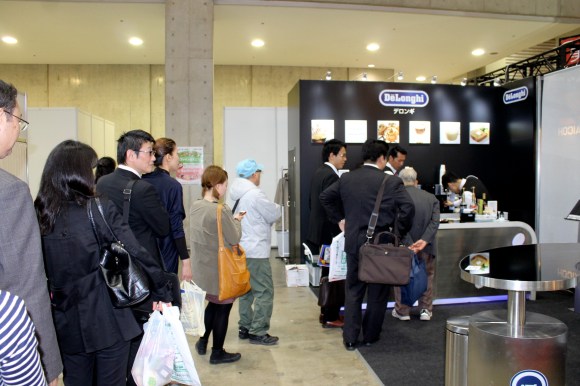
People will wait in a long line for a free espresso.
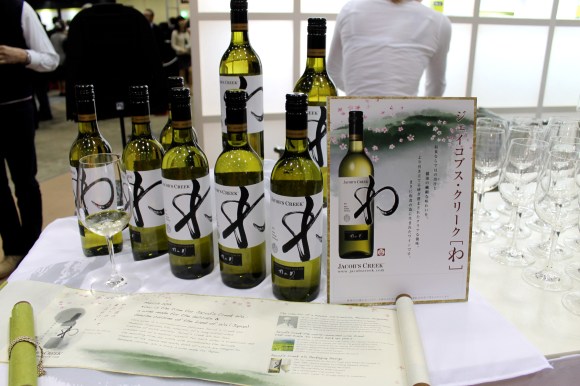
This is a Jacob’s Creek wine only available in Japan. It was developed with sushi chef from Ginza to pair well with sushi and sashimi.
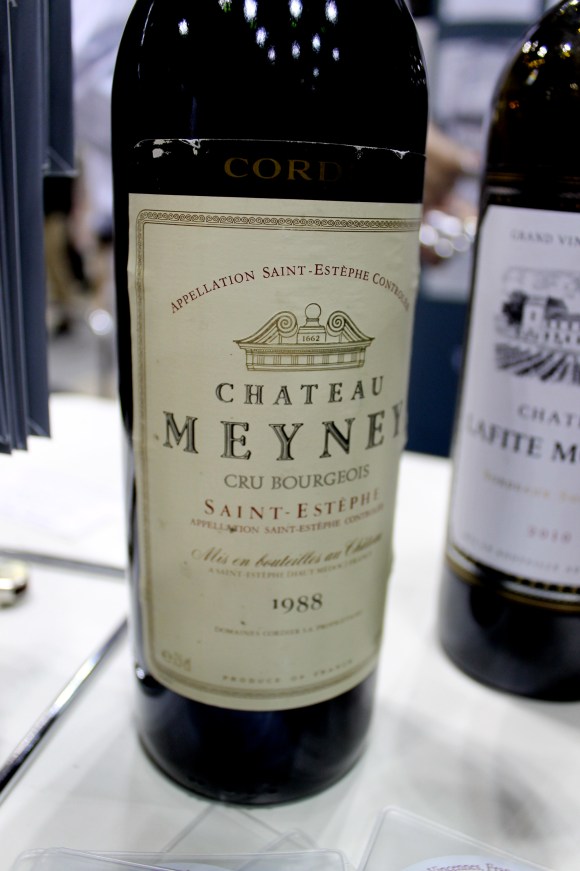
Where else are you going to be able to taste well-aged wines like this?
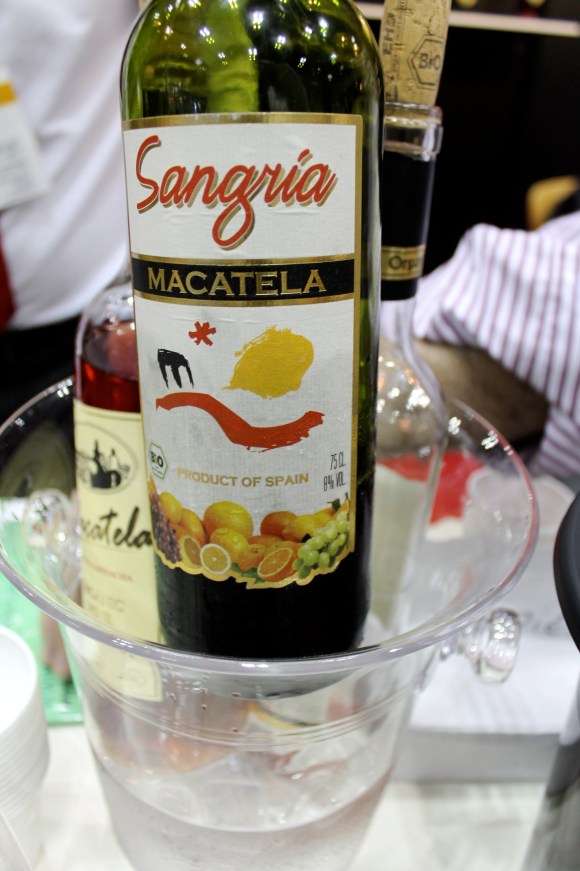
Did you know sangria comes in a bottle? And is actually really good? This was just one of the offerings from organic wine producers EHD Delgado.
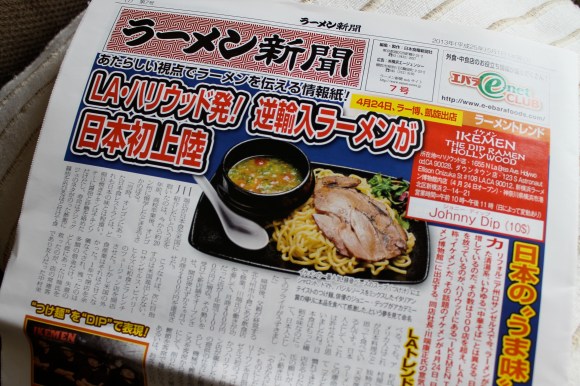
A ramen newspaper for all your ramen info needs!
Photos: RocketNews24

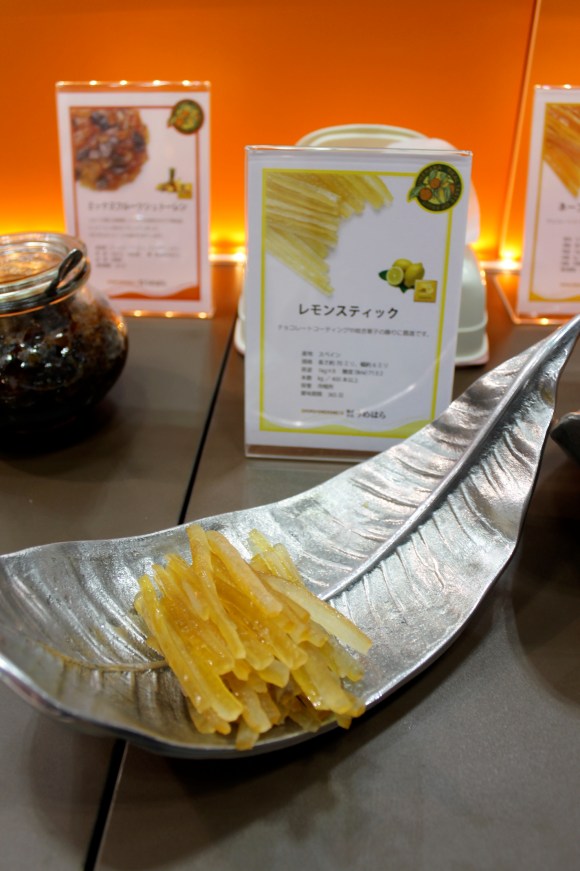
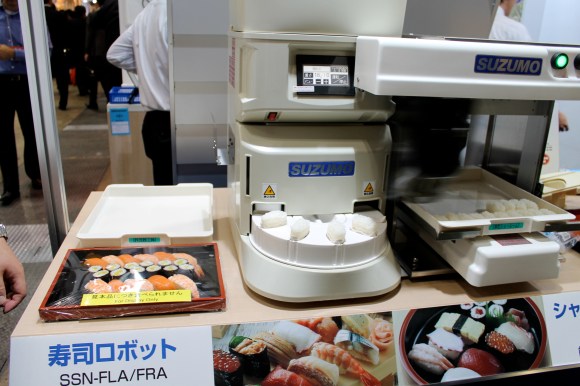
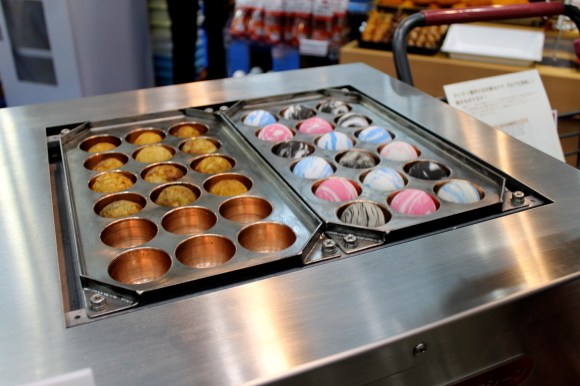
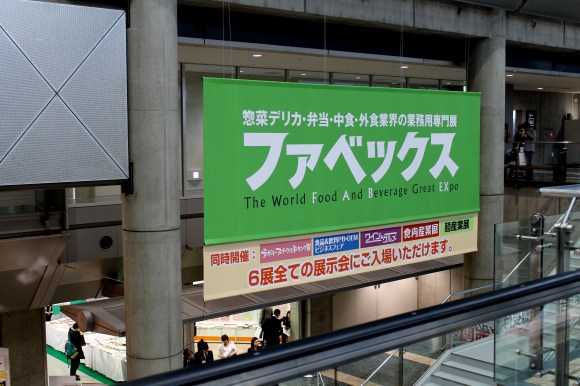
 Get Your Delicious Indigenous Grub on at Tokyo’s Only Ainu Restaurant
Get Your Delicious Indigenous Grub on at Tokyo’s Only Ainu Restaurant Jewelry You Can Eat! Q-Pot Cafe: The Sweetest Most Adorable Cafe in Tokyo!
Jewelry You Can Eat! Q-Pot Cafe: The Sweetest Most Adorable Cafe in Tokyo! Tokyo Station Newly Renovated to Its Former Splendor, But Where are the Remaining Four Zodiac Signs?
Tokyo Station Newly Renovated to Its Former Splendor, But Where are the Remaining Four Zodiac Signs? Dogo Onsen to exhibit works by famous artists in Japan, let you spend the night in them
Dogo Onsen to exhibit works by famous artists in Japan, let you spend the night in them Nara Noodle Shop’s Revolutionary and Fun Way to Eat Udon From a Draw String Bag!
Nara Noodle Shop’s Revolutionary and Fun Way to Eat Udon From a Draw String Bag! The Purple Lucky Bag from Village Vanguard is an extra-large waste of money
The Purple Lucky Bag from Village Vanguard is an extra-large waste of money Rakuten randomly offers 58 New Year’s osechi feasts in Japan, but did we get a star or a dud?
Rakuten randomly offers 58 New Year’s osechi feasts in Japan, but did we get a star or a dud? Japanese beef bowl chain Sukiya’s 2026 Smile Box lucky bag basically pays for itself
Japanese beef bowl chain Sukiya’s 2026 Smile Box lucky bag basically pays for itself New Japanese menstrual product seeks to help women spot unidentified iron deficiencies
New Japanese menstrual product seeks to help women spot unidentified iron deficiencies Tokyo fish market breaks New Year auction record as single fish sells for over 5 million yen【Vid】
Tokyo fish market breaks New Year auction record as single fish sells for over 5 million yen【Vid】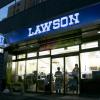 Foreign worker in Japan fends off armed robber with single word, gets no respect from local media
Foreign worker in Japan fends off armed robber with single word, gets no respect from local media What’s the best way to spend 1,000 yen at Kura Sushi?【Japan Super Budget Dining】
What’s the best way to spend 1,000 yen at Kura Sushi?【Japan Super Budget Dining】 Studio Ghibli holiday wreath adds a touch of Kiki cuteness and good fortune to your home【Photos】
Studio Ghibli holiday wreath adds a touch of Kiki cuteness and good fortune to your home【Photos】 Mysterious light-up rainy night-sound Totoro figure doesn’t actually show a scene from the anime
Mysterious light-up rainy night-sound Totoro figure doesn’t actually show a scene from the anime In the midst of coronavirus, a 1,000-year-old food is being revived in Japan
In the midst of coronavirus, a 1,000-year-old food is being revived in Japan Starbucks Japan ready to get Year of the Horse started with adorable drinkware and plushies【Pics】
Starbucks Japan ready to get Year of the Horse started with adorable drinkware and plushies【Pics】 Hayao Miyazaki says Happy New Year to Studio Ghibli fans with new art for Year of the Horse
Hayao Miyazaki says Happy New Year to Studio Ghibli fans with new art for Year of the Horse We found possibly the quietest Japanese-style hotel in Tokyo’s bustling Shinjuku district
We found possibly the quietest Japanese-style hotel in Tokyo’s bustling Shinjuku district Cup Noodle tries an authentic Jiro-style ramen, but something’s not quite right
Cup Noodle tries an authentic Jiro-style ramen, but something’s not quite right The best Starbucks Japan Frappuccinos we want to drink again in 2026
The best Starbucks Japan Frappuccinos we want to drink again in 2026 We revisited Sweets Paradise after a decade to see if Japan’s dessert buffet still delivers
We revisited Sweets Paradise after a decade to see if Japan’s dessert buffet still delivers That time Seiji called JASRAC to ask why he didn’t get paid royalties for his song being on TV
That time Seiji called JASRAC to ask why he didn’t get paid royalties for his song being on TV Japan’s oldest largetooth sawfish in captivity back on display in Mie Prefecture
Japan’s oldest largetooth sawfish in captivity back on display in Mie Prefecture Pizza Hut Japan’s hot lucky bags are perfect for a New Year’s pizza party
Pizza Hut Japan’s hot lucky bags are perfect for a New Year’s pizza party 7-Eleven Japan starts new temporary luggage storage service in over 300 branches
7-Eleven Japan starts new temporary luggage storage service in over 300 branches Disillusionment at Tsukiji’s tourist-target prices led us to a great ramen restaurant in Tokyo
Disillusionment at Tsukiji’s tourist-target prices led us to a great ramen restaurant in Tokyo Starbucks teams up with 166-year-old Kyoto doll maker for Year of the Horse decorations【Photos】
Starbucks teams up with 166-year-old Kyoto doll maker for Year of the Horse decorations【Photos】 Tokyo considering law requiring more trash cans following litter increase in heavily touristed area
Tokyo considering law requiring more trash cans following litter increase in heavily touristed area Tokyo’s Tsukiji sushi neighborhood asks tour groups to stay away for the rest of the month
Tokyo’s Tsukiji sushi neighborhood asks tour groups to stay away for the rest of the month Tokyo event lets you travel back in time, for free, to celebrate 100 years since Showa era start
Tokyo event lets you travel back in time, for free, to celebrate 100 years since Showa era start Japan may add Japanese language proficiency, lifestyle classes to permanent foreign resident requirements
Japan may add Japanese language proficiency, lifestyle classes to permanent foreign resident requirements Sanrio theme park in Japan announces plans to expand into a Sanrio resort
Sanrio theme park in Japan announces plans to expand into a Sanrio resort Stamina-destroying “Paralysis Noodles” are Tokyo’s newest over-the-top ramen innovation
Stamina-destroying “Paralysis Noodles” are Tokyo’s newest over-the-top ramen innovation Survey asks foreign tourists what bothered them in Japan, more than half gave same answer
Survey asks foreign tourists what bothered them in Japan, more than half gave same answer Japan’s human washing machines will go on sale to general public, demos to be held in Tokyo
Japan’s human washing machines will go on sale to general public, demos to be held in Tokyo Japan’s deadliest food claims more victims, but why do people keep eating it for New Year’s?
Japan’s deadliest food claims more victims, but why do people keep eating it for New Year’s? We deeply regret going into this tunnel on our walk in the mountains of Japan
We deeply regret going into this tunnel on our walk in the mountains of Japan Studio Ghibli releases Kodama forest spirits from Princess Mononoke to light up your home
Studio Ghibli releases Kodama forest spirits from Princess Mononoke to light up your home Major Japanese hotel chain says reservations via overseas booking sites may not be valid
Major Japanese hotel chain says reservations via overseas booking sites may not be valid Put sesame oil in your coffee? Japanese maker says it’s the best way to start your day【Taste test】
Put sesame oil in your coffee? Japanese maker says it’s the best way to start your day【Taste test】 No more using real katana for tourism activities, Japan’s National Police Agency says
No more using real katana for tourism activities, Japan’s National Police Agency says Starbucks Japan reveals new sakura drinkware collection, inspired by evening cherry blossoms
Starbucks Japan reveals new sakura drinkware collection, inspired by evening cherry blossoms Updated cherry blossom forecast shows extra-long sakura season for Japan this year
Updated cherry blossom forecast shows extra-long sakura season for Japan this year Disney’s Dreamland Illuminations in Harajuku Light up Your World, You Won’t Want to Go Home
Disney’s Dreamland Illuminations in Harajuku Light up Your World, You Won’t Want to Go Home Beautiful Japanese City Councilor: “I don’t wash my face or go to the bathroom”. Loses Job, Might be a Yakuza Alien.
Beautiful Japanese City Councilor: “I don’t wash my face or go to the bathroom”. Loses Job, Might be a Yakuza Alien. Curry Udon Topped With Whipped Cream!? It’s Better than You Think!
Curry Udon Topped With Whipped Cream!? It’s Better than You Think! A Day in the Life of a Cosplay Photo Buff
A Day in the Life of a Cosplay Photo Buff Timeless Fukuoka Ramen Shop Serves Up Good Memories, Cheap Eats
Timeless Fukuoka Ramen Shop Serves Up Good Memories, Cheap Eats Bali’s Allure Exihibited by These New Additions to World Heritage Sites
Bali’s Allure Exihibited by These New Additions to World Heritage Sites Send Your Message With a Smash! Smartphone App, Smash Message, Allows You to Vent Your Feelings
Send Your Message With a Smash! Smartphone App, Smash Message, Allows You to Vent Your Feelings Stomachs of Steel Meet Their Matches in Japan’s Top Five Deka-Mori Restaurants
Stomachs of Steel Meet Their Matches in Japan’s Top Five Deka-Mori Restaurants Lotteria’s Tower Cheese Burger: The Reality of Five Patties Covered in Melted Cheese
Lotteria’s Tower Cheese Burger: The Reality of Five Patties Covered in Melted Cheese How Lens Maker Sigma Saved My Life
How Lens Maker Sigma Saved My Life A Candy Store Variety ‘Cream of Corn Soup’ Flavored Ice Cream Bar Fit for a Fancy Restaurant
A Candy Store Variety ‘Cream of Corn Soup’ Flavored Ice Cream Bar Fit for a Fancy Restaurant Attention, Hipster Bibliophiles: Brooklyn Parlor Is Tokyo’s Newest “It” Cafe
Attention, Hipster Bibliophiles: Brooklyn Parlor Is Tokyo’s Newest “It” Cafe For Butter Lovers: Easy, Greasy Japanese!
For Butter Lovers: Easy, Greasy Japanese! Peep Into the Enchanted Worlds of Snow White and a Christmas Wonderland With These Books That Open to 360 Degrees of Charm!
Peep Into the Enchanted Worlds of Snow White and a Christmas Wonderland With These Books That Open to 360 Degrees of Charm!
Leave a Reply